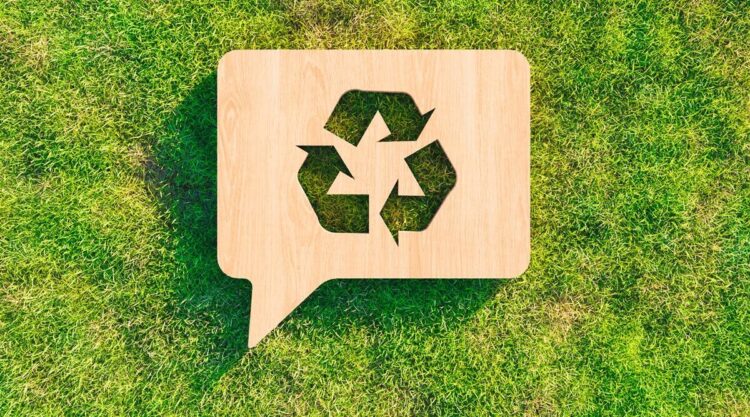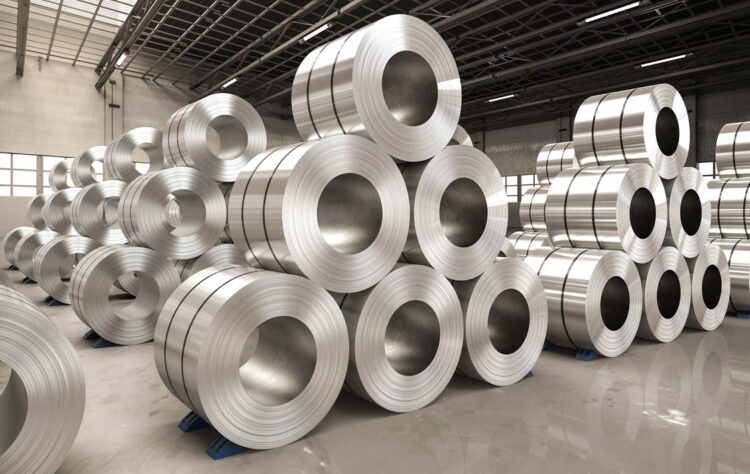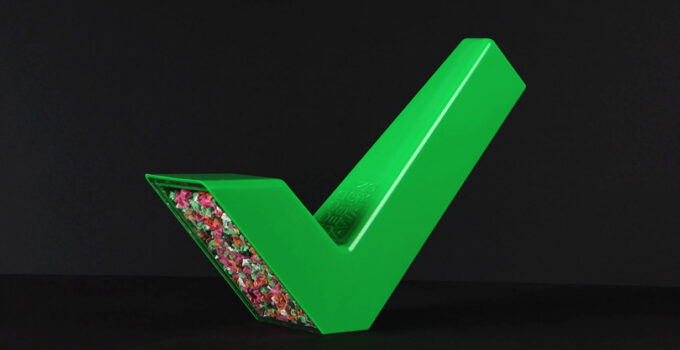Do you know what our clothes are made of or anything about their creation before they hit store shelves?
When we think about clothes, we often think first about how much it costs and whether they will have what we want in our size. But few of us think about how it was created and found its way to us. The same goes for any other material used in our daily life, but also for the trophies and awards we find to be so valuable. Have you ever wondered whether or not they did some harm to the planet we call home while being produced? If they do not carry the eco-label, chances are they have.
Many of the materials we like to use cause serious harm to animals and our planet. Recent research shows that for example, plastic, polyester, nylon, and acrylic materials release thousands of tiny plastic microfibers when washed. These fibers travel through our sewage systems and end up in the oceans where marine animals can easily ingest them. That plastic can be found in the fish we eat. This means that we are consuming tiny pieces of plastic that have comes from the materials we use every day. And that knowledge is not very pleasant, is it?
Unfortunately, this is not the only negative impact on the environment that industry can have. An interesting fact is that cotton is treated with pesticides and its cultivation for clothing pollutes water and contributes to the death of bees. Bleaching and toxic dyes used in fabric dyeing do not help our environment at all, and some clothes are even treated with formaldehyde.
So, it is important to know how materials we use are made, but also what they are made of. That’s why www.eclipseawards.com suggests, that when it comes to how to create eco-friendly awards and trophies, you use ecological materials that are the least harmful to our environment. What are these, you can read in the rest of the article…
Page Contents
Anything recycled

Source: indianexpress.com
Recycling is one of the most sustainable ways to live, whether it’s reusing bags, separating paper, plastic, and metal, or wearing recycled clothes. Recycling has even crossed over into the world of awards and trophies.
Today, plastic is one of the most widely used materials. Plastic products are all around us. From the food and drink containers, we buy at the supermarket and business gifts to items in our homes. We wear clothes made of plastic fibers, sit on plastic chairs and travel in cars, trains, and planes that contain plastic parts. We even receive plastic awards.
Our addiction to it is also having increasingly serious consequences. It most often ends up in landfills and in the oceans, where pollution devastates plant and animal life.
If we want to do something, it’s time to get going! That’s why we bring you some ecological alternatives that you can use to ensure your trophies are sustainable and planet friendly.
1. Glass
In the past, our mothers and grandmothers used to fill glass bottles with milk. Now look around you and you will probably see plastic water bottles and plastic food containers. Times have changed drastically.
Sometimes going back in time is actually a good thing. Unlike plastic, which is often derived from fossil fuels, glass is made from sand. This renewable resource contains no chemicals that can be absorbed into the food or body. And it’s easy to recycle!
2. Milk protein

Source: dairyreporter.com
Scientists say milk protein could help produce biodegradable plastics for insulation, packaging, and other products. It is about converting casein, the main protein found in milk, into a biodegradable material with properties similar to polystyrene.
They have discovered a way to make protein less susceptible to cracking, all thanks to a silicate clay called sodium montmorillonite. Using it, they get material like polystyrene that completely decomposes.
3. Liquid wood
An interesting biopolymer called liquid wood looks and acts just like plastic. But unlike petroleum-based plastics, it is biodegradable and environmentally friendly. This particular biopolymer comes from lignin.
Manufacturers mix lignin, a byproduct of paper mills, with water to create a moldable, nontoxic composite material.
4. Aluminum

Source: almetals.com
Did you know that this material can be completely recycled, and the best of all is that its products can be recycled again and again? Moreover, the production of new products from recycled ones requires a lot less energy than the production of new metal packaging from scratch.
Finally, consider wrapping your awards in bags made of cloth, if you want to go all the way when it comes to being environmentally friendly.
When plastic bags first came on the scene, we had a choice: paper or plastic. Unfortunately, we made the wrong choice and today everything is plastic. For starters, you can make this world a better place by using cloth bags. And you can personalize them with your logo and give an ecological business gift as a reminder to take care of our planet.
Our planet is packed with products and materials that are doomed to be on this planet forever, due to the fact that they cannot decompose. So, choosing to use eco-friendly materials for the creation of your trophies and awards really matters. Too many of these are being made of acrylic, and why they do look pretty and may be cheaper to make than those made of the materials we mentioned earlier, their impact on our environment should not be ignored. It seems like they might just outlive us on this planet. So, make a conscious choice to go green and be a part of this movement. Choose to use materials that are kind to our planet every chance you can, and you’ll be honoring not only the ones receiving the award but also every single living being.





